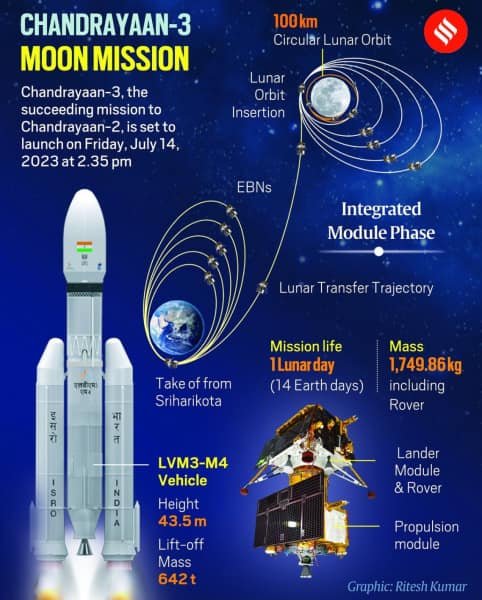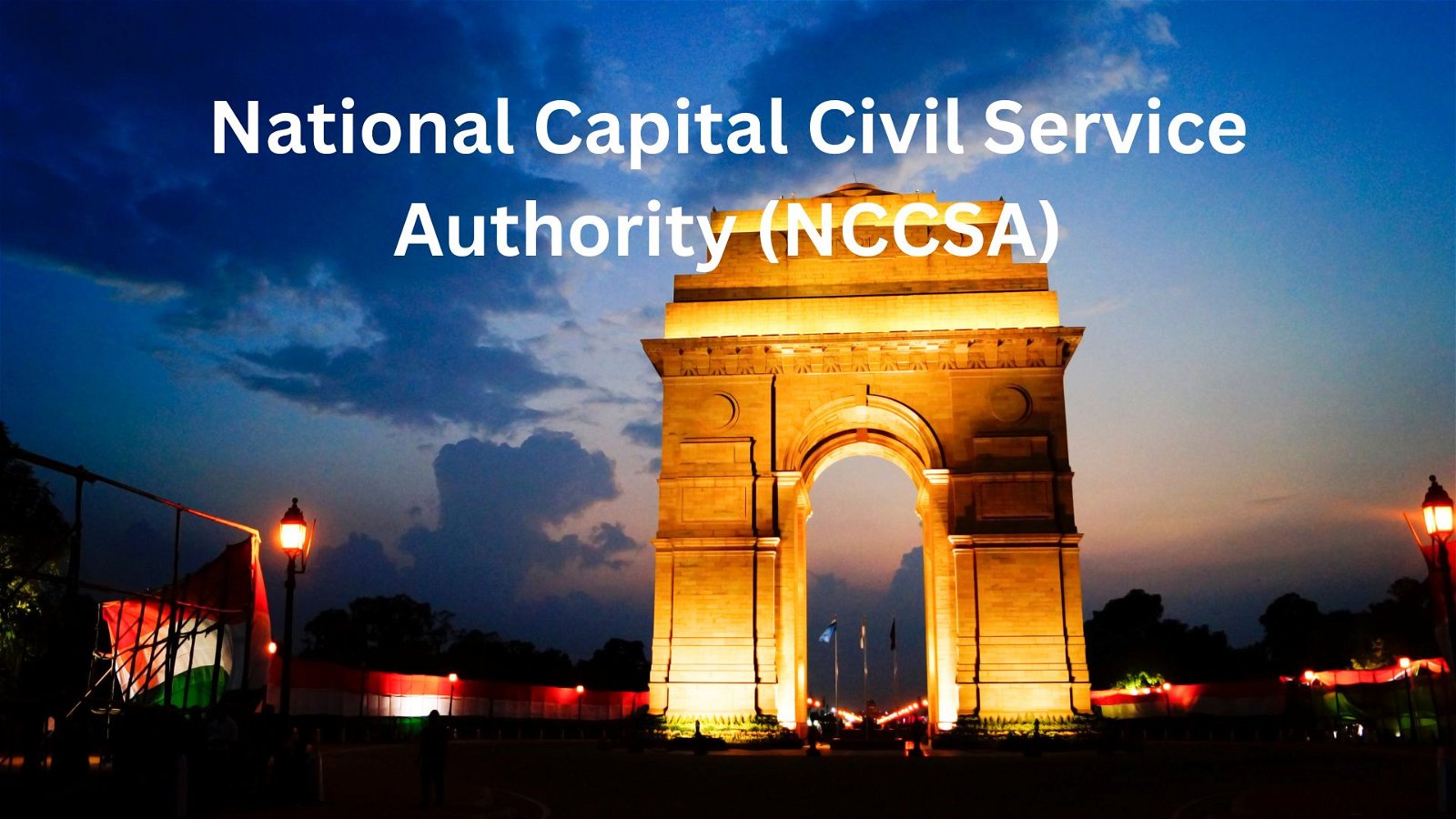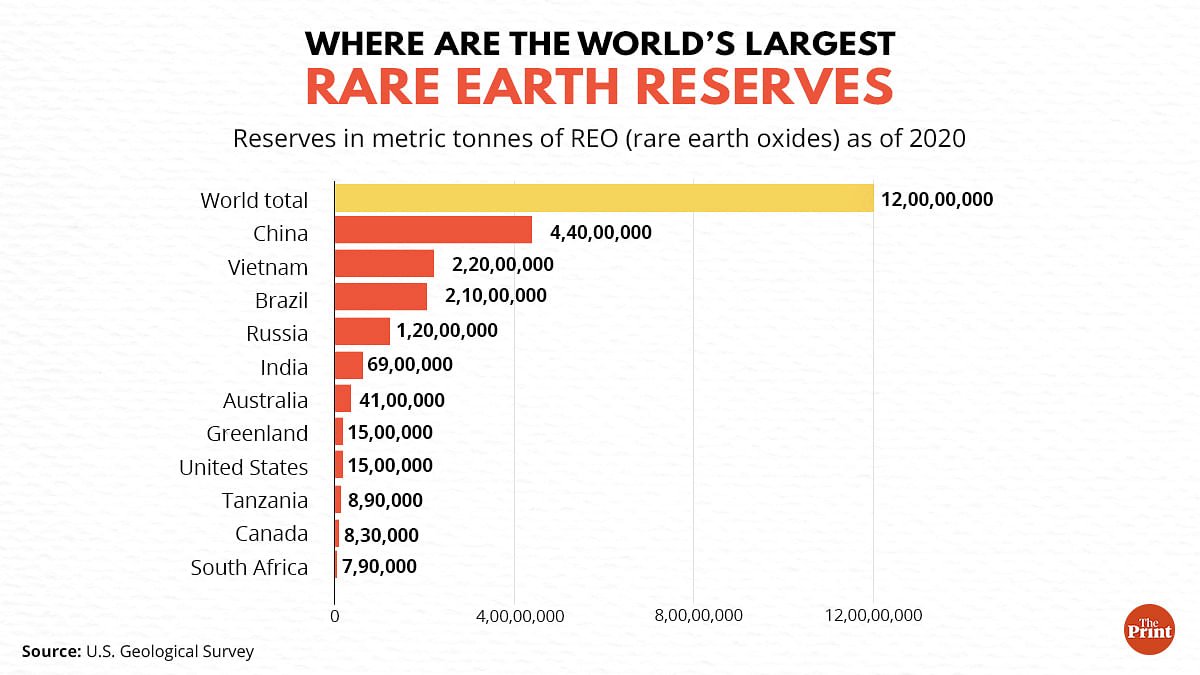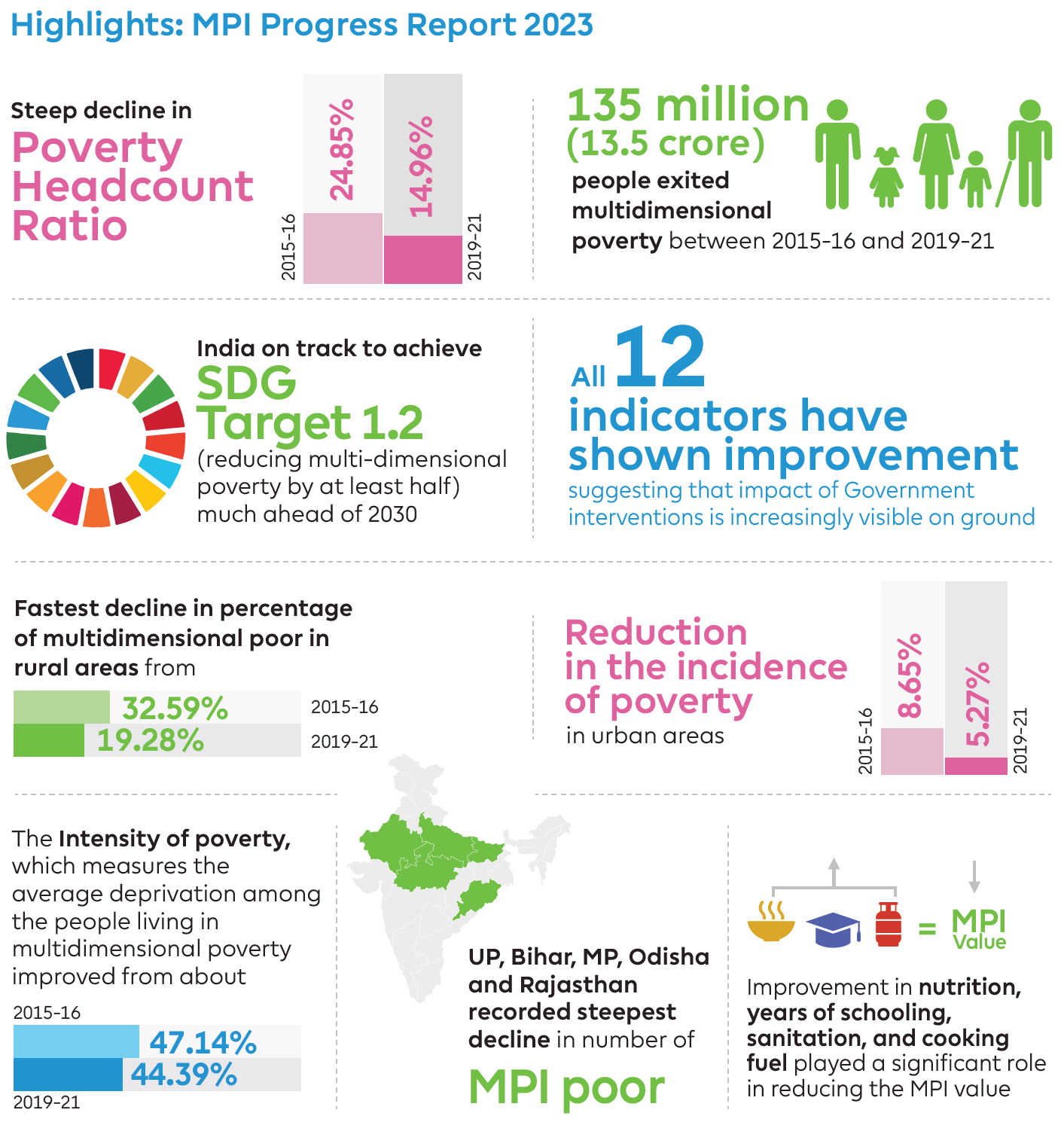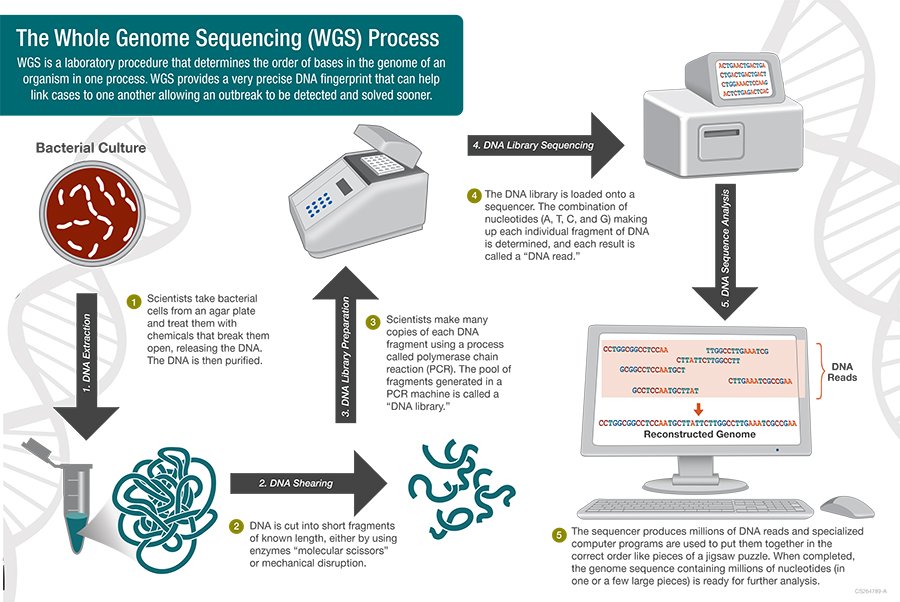
Current Affairs January 23, 2024: Ram Mandir Movement, Pradhan Mantri Suryodaya Yojana, Sub-Categorisation Within Castes, Deep Sea Corals, Invasive Alien Species, Mars Helicopter Ingenuity
Subscribers of "Current Affairs" course can Download Daily Current Affairs in PDF/DOC
Subscribe to Never Miss an Important Update! Assured Discounts on New Products!
Must Join PMF IAS Telegram Channel & PMF IAS History Telegram Channel
{GS1 – MIH – Movements} Ram Mandir Movement
- Context (IE): The Ram Mandir consecration ceremony took place in Ayodhya.
- It is seen as the result of a decades-long Ram Janmabhoomi Movement.
Evolution of Movement
Medieval Period
- Marathas demanded Ayodhya, Kashi and Mathura from the Nawab of Awadh in 1751 and 1756.
- Later, with defeat in the third battle of Panipat (1761), the Marathas become irrelevant.
British Period
- First judicial submission: Hafizullah in Faridabad court (1822) submitted the presence of a mosque built by Babar on the birthplace of Lord Ram, near Sita Rasoi.
- During British Rule, a railing separated the places of worship and separated the Mosque and a platform for Hindus.
- Hanumangarhi Riots (1855): As per Major General GD Outram’s report to Nawab Wajid Ali Shah, “Hindus led by Naga Sadhus and Bairagis secured Janamsthan and Hanuman Garhi, after a clash between Hindus and army led by Shah Ghulam Hussein“.
- 1856 Attack: Hadiga-I-Shuhuda, written by Mirza Jan, records an attack on the Ram Janmabhoomi by Amir Ali Amethawi in 1856, but British troops killed the attacker.
- 1858 FIR: Mohammad Salim filed an FIR against Nihang Sikhs for installing the Nishan Sahib, performing a havana, and writing ‘Ram’ inside the Babri Masjid.
- 1885: Mahant of Janmasthan Raghubar Das sought court permission to build a temple at the Ram Chabutra near the Babri Masjid but within the complex, but it was dismissed.
Post Independence Period
- 1949 Petition: The UP government received a petition for temple construction. The Faizabad administration reported that the land belonged to the government.
- Hindu Mahasabha Resolution 1949: It called for the ‘liberation’ of Ram Janmabhoomi at Ayodhya, Krishna Janmabhoomi at Mathura and Vishwanath at Kashi.
- Idol in mosque: On December 22-23, 1949, the idol of Ram Lalla was supposedly placed in the mosque by Abhiram Das (born Abhinandan Mishra and later became ascetic as per Liberhan Commission).
- Failed attempts to remove the idol: Then PM Jawahar Lal Nehru directed to remove the idol. District magistrates and local MLAs declined to follow.
- Acquisition by Municipal body occurred later with Ram idol inside.
- Demand for restoration of Ayodhya: Former UP minister Dau Dayal Khanna demanded the restoration of Ayodhya, Kashi and Mathura to the Hindus from the Indira Gandhi government.
- Vishwa Hindu Parishad Dharma Sansad 1984 reiterated the demand for liberation, forming “Ram Janmabhoomi Mukti Yagna Samiti”.
- Opening of locks, December 1986: Faizabad district judge KM Pandey ordered the opening of the locks of the Babri Masjid and permitted Hindus to offer prayers therein.
- February 1986: All-India Muslim Personal Board meeting in Delhi urged parties to support their demand for the handover of Babri Masjid to Muslims.
- February 3, 1986: Hashim Ansari (On behalf of the Sunni Waqf Board) moved to Allahabad High Court against the Faizabad court decision seeking possession of Babri mosque.
- February 1986: The Babri Masjid Action Committee was formed in Lucknow.
- Later, in December 1986, the All-India Babri Masjid Conference was held under the leadership of Syed Shahabuddin, creating the Babri Masjid Movement Coordination Committee (BMMCC).
- Shilanyas movement 1989: It was launched by VHP, gathering consecrated bricks (Ram Shila) from all over the country. The government allowed it.
- November 10, 1989, was decided to be the day for the Shilanyas.
- Palampur resolution 1989: It called for a negotiated settlement or legislation without court interference on the land.
- November 9, 1989: The foundation-laying ceremony was held, and Kameshwar Chaupal, a Dalit, laid the first Ram Shila.
- Rath Yatra 1990 from Somnath to Ayodhya was carried out with violence and police killings at many places.
- Demolition Day 1992: A mob demolished the Babri Masjid, and the UP government was dismissed.
- Acquisition of Certain Areas at Ayodhya Act 1993: It gave the government the authority to acquire 67.03 acres of the disputed Ram Janmabhoomi-Babri Masjid land.
- Presidential reference under Article 143 (1) of the Constitution to determine to determine the old status of the temple was also raised.
- Justice Liberhan Commission Report 2009: It indicated demolition was not spontaneous. Consequently, a case was registered against the leaders. Later, they were acquitted.
- Allahabad High Court Judgement 2010: It divided the land in a 2:1 ratio to Shri Ram Lala Virajman and Nirmohi Akhara and Sunni Central Waqf Board, respectively. Later, it was challenged in the Supreme Court.
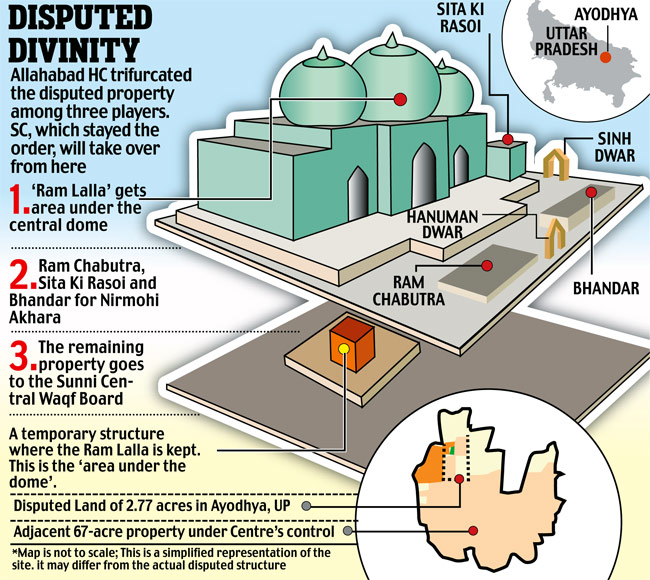
- Supreme Court Judgement 2019: A five-judge bench of the Supreme Court unanimously awarded the entire disputed land to the Hindu petitioners for a Ram temple at Ayodhya. It also directed the allotting of alternate land for the mosque.
- Shri Ram Janmabhoomi Teerth Kshetra Trust was formed following the judgement to carry out the construction.
{GS2 – MoNRE – Schemes} Pradhan Mantri Suryodaya Yojana
- Context (IE): Prime Minister launched the Pradhan Mantri Suryodaya Yojana.
- Under the scheme, one crore households will receive rooftop solar power systems.
- In 2014, the government launched the Rooftop Solar Programme with a goal of 40 GW by 2022. This target was extended to 2026 as it could not be achieved on time.
- The new scheme, Pradhan Mantri Suryodaya Yojana, is an effort to reach the 40 GW rooftop solar capacity goal.
Rooftop Solar Programme
- It was launched in 2014 and aims to increase India’s rooftop solar capacity in residential areas.
- It provides financial assistance and incentives to distribution companies (DISCOMs) and individuals.
- The goal is to achieve 40 GW of rooftop solar capacity by March 2026, currently in its second phase.
- Due to the program, rooftop solar has increased from 1.8 GW (2019) to 10.4 GW (2023).
- Consumers can avail benefits of the scheme through DISCOM tendered projects or the National Portal.
India’s current solar capacity
| Total Solar Capacity (GW) |
Rooftop Solar Capacity (GW) |
|
|
|
|
| India’s current renewable energy capacity stands at around 180 GW. | |
|
Installed capacity for Renewables
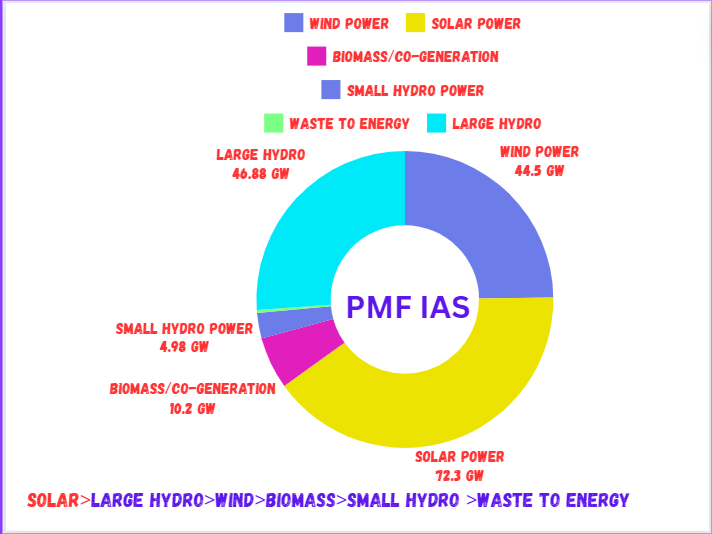
India’s Renewable Energy Capacity (2023)
|
Why is an expansion of solar energy important for India?
- Rising Energy Demand: India’s energy supply is set to rise from 42 exajoules (EJ) in 2022 to 53.7 EJ in 2030 and 73 EJ in 2050. (International Energy Agency (IEA) latest World Energy Outlook).
- Diversification of Energy Sources: Dependence on traditional sources like coal is not sustainable in the long term.
- Environmental Benefits: Solar energy is a clean and green source of power, contributing to the reduction of greenhouse gas emissions.
- Self-Reliance in Energy: India already imports around 40% of its primary energy. By expanding its solar capacity, India aims to reduce its reliance on imported fossil fuels.
- Global Commitments: India, at COP26, has pledged to achieve 500 GW of renewable energy by 2030.
|
- Job Creation: As the solar sector expands, it creates jobs in manufacturing, installation, maintenance, and related fields, contributing to economic growth.
- Reduction of Power Deficits: Solar energy projects can be deployed in various regions, including remote and off-grid areas. This helps address power deficits in certain areas.
GoI initiatives for Solar Power
- Production Linked Incentive Scheme (PLI) for National Programme on High-Efficiency Solar PV Modules.
- Solar Park Scheme, designed to establish 50 Solar Parks of 500 MW and above.
- PM-KUSUM aimed to achieve solar power capacity addition of 30.8 GW by March 2026.
- Rooftop Solar Programme for the residential sector.
- Off-grid Solar PV Applications Programme for rural areas.
- International Solar Alliance (ISA).
- Pradhan Mantri Suryodaya Yojana.
{GS2 – Polity – IC – Reservation} Sub-Categorisation Within Castes
- Context (IE I TH I TH): The GoI has formed a committee to evaluate a method for the equitable distribution of benefits to the most backward communities out of 1,200 SCs across the country.
- It is a five-member committee of Secretaries chaired by the Cabinet Secretary.
- PM promised to look into the demand for sub-categorisation of SCs as raised by the Madiga community during the Telangana Assembly election.
- A seven-judge Constitution Bench of the SC is also hearing the question of whether sub-categorisation among SCs and Scheduled Tribes is at all permissible.
Mandate of the committee
- The panel will be looking into “other ways to take care of their grievances”.
- It will look at strategies like special initiatives, focusing existing schemes towards them, etc.
- The panel will not look into the questions of reservation or what the break-up of SC quota should be for employment and education.
SC Constitutional Bench’s Mandate
|
What is Sub-Categorisation Within Castes?
- Sub-categorisation within castes refers to the process of creating sub-groups for reservation and affirmative action within the existing categories of
- Scheduled Castes (SCs),
- Scheduled Tribes (STs), and
- Other Backward Classes (OBCs).
- It aims to:
- Address the intra-category inequalities and
- Ensure a more equitable distribution of benefits and opportunities among the most deprived and marginalised sections of society.
Historical Attempts of Sub-Categorisation
- In 1975, the Punjab government issued a notification dividing its 25% SC reservation at that time into two categories:
- Balmiki and Mazhbi Sikh communities.
- The rest of the SC communities didn’t get this preferential treatment.
- A similar law, the Andhra Pradesh Scheduled Castes (Rationalisation of Reservations) Act, 2000, was enacted in A.P.
- In ‘E.V. Chinnaiah v State of Andhra Pradesh’, 2004, a five-judge constitution bench struck down the law introduced by Andhra Pradesh.
- In 2006, Punjab & Haryana HC in ‘Dr. Kishan Pal v. State of Punjab struck down the 1975 notice.
- In 2006, the Punjab government brought back the law by passing the Punjab Scheduled Caste and Backward Classes (Reservation in Services) Act 2006.
- In 2010, the HC once again struck down this provision.
- In 2010, Punjab government moved to the SC against the HC ruling, arguing that the SC in 2004 had incorrectly concluded that the Scheduled Caste quota cannot be sub-classified.
- In 2014, the SC in ‘Davinder Singh v State of Punjab’ referred the appeal to a five-judge constitution bench since it needed an inquiry into the interplay of several constitutional provisions.
|
- In 2020, the constitution bench headed by Justice Arun Mishra held that the SC’s 2004 decision in E V Chinnaiah required reconsideration.
State Govt’s Argument for Sub-Categorisation
- Sub-classification is essentially an application of the creamy layer formula.
- Instead of excluding the better-off castes from the Scheduled Caste list, the state is merely giving preferential treatment to the most disadvantageous castes.
SC Observations
E.V.Chinnaiah vs State Of Andhra Pradesh And Ors
- Andhra Pradesh Scheduled Castes (Rationalisation of Reservations) Act, 2000 violated right to equality.
- SC list must be treated as a single, homogenous group.
- States did not have the power to “interfere” or “disturb” this list, including through sub-classification, as this would violate Article 341 of the IC.
|
State of Punjab and Others versus Davinder Singh and Others, 2014
- States could decide on the quantum of benefits in the lists of SCs/STs already notified without “tinkering” with them.
Jarnail Singh v Lachhmi Narain Gupta, 2018
- The Supreme Court upheld the concept of the “creamy layer” within SCs, too.
|
SC Constitution Bench, 2020
- Court and the state cannot be a silent spectator and shut its eyes to stark realities.
- The ruling disagreed with the premise that Scheduled Castes are a homogeneous group.
- There are “unequals within the list of Scheduled Castes, Scheduled Tribes, and socially and educationally backward classes.”
|
Need for Sub-Categorisation
Address Inequalities Among Scheduled Caste Communities:
- There have been graded inequalities among SC communities, and even among the marginalised, some communities have lesser access to basic facilities.
- The relatively more forward communities have managed to avail benefits consistently while crowding out the more backward ones.
Disproportionate Share in Opportunities
- The policy of protective and compensatory discrimination leads to disproportional representation of sub-castes in employment, education, and legislature.
- E.g. In Tamil Nadu, a 3% quota within the Scheduled Caste quota is accorded to the Arundhatiyar caste after Justice M S Janarthanam’s report stated that despite being 16% of the SC population in the state, they held only 0-5% of the jobs.
Overcoming Hierarchy within Scheduled Castes
- The SC category is not homogenous and comprises a wide range of communities with distinct cultural, social, and economic characteristics.
- Some SC communities may have made progress in education, employment, and socio-economic development, while others continue to face significant disadvantages.
Social Mobility
- The reservation policy is ineffective in providing benefits to every sub-caste group at a uniform level.
- The acquisition of political power, educational improvement, and occupational change could become significant assets for Scheduled Castes’ upward mobility.
Ensuring Social Justice
- Ensuring that historically marginalised communities receive fair and just treatment and that their specific concerns are adequately addressed.
- Sub-categorization allows for a more targeted approach in addressing the specific vulnerabilities and needs of particular SC sub-groups.
Challenges associated with the Sub categorisation of Caste
May Not Address the Problem of Inequality within Scheduled Castes (SCs)
- According to the National Commission for Schedule Tribes (NCST), the backwards SCs are lagging far behind forward Scheduled Caste communities, and a separate quota would not help.
- NCSC & NCST: Existing schemes and government benefits should first reach these sections before any sub-categorisation.
Issue of Federalism
- SC (2004): States did not have the power to unilaterally sub-categorise communities in the list of SCs.
- The IC has provided that these lists can only be made by Parliament and notified by the President.
- SC (2020): A five-judge Bench said that states could Sub-categorise the castes.
Identification and Criteria
- Determining the criteria for sub-categorization can be challenging.
- S.C (State of Kerala v N M Thomas, 1976): “Scheduled Castes are not castes, they are class.”
- S.C (E V Chinnaiah Case): Special protection of SCs is based on the premise that “all Scheduled Castes can and must collectively enjoy the benefits of reservation regardless of interse inequality.”
- The protection is not based on educational or economic but based on those who suffered untouchability.
- Parameters such as socio-economic status, educational attainment, or regional factors may be considered.
Data Accuracy and Availability
- Concrete population numbers of each community and sub-community.
- Respective socio-economic data of castes and sub-castes are necessary.
- Up-to-date data on the socio-economic status of different SC communities is a challenge.
Possibility of Fragmentation
- Sub-categorization might lead to the fragmentation of the SC community, diluting their political and social identity. This could weaken their collective strength in advocating for their rights.
Way Forward
Exploring Alternatives to Introduce Sub-Categorisation
- The Attorney General of India (AGI) had opined that a constitutional amendment could be brought in to facilitate this.
- NCSC and NCST:
- Article 16(4) of the IC already provided for states to create special laws for any backward classes they felt were under-represented.
- Parliament can sub-categorise SCs and STs, and Articles 341 and 342 of IC did not prevent parliament from doing so.
- The Usha Mehra committee recommended the inclusion of Clause (3) in Article 341 through a constitutional amendment empowering state legislature to enact reclassification of the SC category subject to Presidential confirmation.
National Commission for Scheduled Caste (NCSC) & National Commission for Scheduled Tribe (NCST)
|
Data Collection and Analysis
- Ensuring comprehensive and accurate data collection on the socio-economic conditions of different Scheduled Caste communities.
Criteria Development
- Develop transparent and inclusive criteria for sub-categorization.
- The Andhra Pradesh government in 1996 formed a Commission of Justice Ramachandra Raju, which recommended sub-categorisation of SC in the State based on evidence that some communities were more backward and had less representation than others.
Following the Middle Path
- Strike a balance between recognising the diversity within the Scheduled Caste category and maintaining the overall unity of the community.
Scheduled Caste (SC)
- It is an administrative category consisting of various historical touchable and untouchable castes grouped for preferential treatment.
- Lack of Internal Distinctions: Such grouping places all of them under one umbrella category without taking into account the internal distinctions among them.
- Problem: Reservations could not remove the prior existing internal differentiations between all the castes listed as Scheduled Castes.
Constitutional Provisions for Weaker Sections
- Article 15 (4): The special provisions for their advancement.
- Article 16 (4A): Speaks of reservation in the services under the State in favour of SCs/STs.
- Article 17: Abolishes Untouchability.
- Article 46: Requires the State to promote with special care the educational and economic interests of the weaker sections of the people, and, in particular, of the SCs and STs, and to protect them from social injustice and all forms of exploitation.
- Article 330 and Article 332: Provide for reservation of seats in favour of the SCs and STs in the Parliament and the legislative assemblies of the States.
- Article 335: Provides that the claims of the members of the SCs and STs shall be taken into consideration, consistently with the maintenance of efficiency of administration, in the making of appointments to services and posts in connection with the affairs of the Union or of a State.
- Article 338: Provides for an NCSC and NCST.
- Article 341: It authorises the President to declare certain castes and classes as Scheduled Castes in a state or a union territory.
- It also states that the Parliament can include or exclude any caste or tribe from the list.
- Article 342: It states that “Scheduled Castes” means such castes, races or tribes or parts of or groups within such castes, races or tribes as are deemed under Article 341.
- Part IX and Part IXA of the IC relating to Panchayats and the Municipalities, reservation for SCs and STs in local bodies.
{GS3 – Envi – Conservation} Deep Sea Corals
- Context (TOI): World’s largest deep-sea coral reef mapped off the United States’ east coast.
- The reef is around 310 miles (500 km) long and extends from Florida to South Carolina. In some places, it is as wide as 68 miles (110 km).
- The reef was discovered at depths where sunlight cannot reach, between 200 and 1,000 meters.
Deep Sea Corals
- Deep-sea corals are defined as corals that live at depths greater than 50 meters, but most species live in depths several hundred meters deep, in cold, dark, rocky habitats, often far from shore.
- Unlike shallow-water coral reefs, which are limited to warm tropical waters, deep-sea corals are found throughout the world’s oceans, from tropical to polar regions.
- Like their shallow counterparts, deep-sea reefs are created by stony corals that form large geological structures over thousands of years.
- While the diversity of corals that build reefs in shallow waters is very high, and includes hundreds of species, there are only six species of deep-sea stony corals that create reefs.
- Deep-sea corals need to rely on alternate sources of food to obtain their nutrition, either by feeding on organic material falling from the surface or by feeding on small plankton.
- They are bright white in coloration, rather than the brown and green colors that we see in shallow reefs due to the lack of algae in deep-sea corals.
- Deep-sea corals grow very slowly, with some specimens found to be thousands of years old.
- They are known to be “important ecosystem engineers” that create shelter, food, and a nursery for fish and other invertebrates.

For details on Coral reefs, visit >Coral Reefs, Coral reef bleaching.
{GS3 – Envi – Degradation} Invasive Alien Species
- Context (DTE): The dense forests of Tamil Nadu are facing a rapid spread of invasive plant species.
- Convention on Biological Diversity (CBD) defines invasive species as alien plants, animals, pathogens and other organisms that are non-native to an ecosystem, and which may cause economic or environmental harm or adversely affect human health.
- Invasive alien species can transform the structure and species composition of ecosystems by dominating the ecosystems and repressing or excluding native species.
- Since the 17th century, invasive alien species have contributed to nearly 40% of all animal extinctions.
Characteristics of Invasive Species
- Rapid reproduction and growth.
- High dispersal ability.
- Ability to survive on various food types.
- Ability to adapt physiologically to new conditions.
- Tolerance of a wide range of environmental conditions.
- Ability to alter growth form to suit current condition.
Common Invasive Species Found in India
- Viper grass
- Lantana camara
- Prosopis juliflora
- Water hyacinth
- African catfish
- Cotton Mealy Bug
- Primrose Willow
International Arrangements to Control Invasive Alien Species
- Convention on Biological Diversity (CBD) Aichi Target 9 on invasive alien species.
- Global Invasive Species Programme: It is supporting the implementation of Article 8(h) of CBD with IUCN as a partner organisation to address the global threat from Invasive Alien Species (IAS).
- Convention on Migratory Species of Wild Animals (CMS or Bonn Convention): It considers IAS as a threat to migratory species.
- Ramsar Convention: COP 7 resolution addresses threats of invasive species to wetland ecosystems.
- United Nations Convention on the Law of the Sea (UNCLOS): States are required to protect and preserve the marine environment from intentional or unintentional introduction of alien species.
- IUCN SSC Invasive Species Specialist Group (ISSG) aims to reduce threats to ecosystems and their native species by increasing awareness of ways to prevent, control or eradicate invasive species.
{GS3 – IE – Inflation} Deglobalisation of Food Inflation
- Context (IE): Global food prices have crashed in the last year, but inflation remains elevated in India.
Food inflation in India
- Food Inflation is the measure of the price changes of food items in a consumer’s basket of goods and services, such as cereals, vegetables, fruits, dairy products, and meat.
- It is measured by Consumer Food Price Inflation (CFPI) in India, which is a subset of the broader Consumer Price Index.
Deglobalisation of Food Inflation
- It means that domestic inflation is not in trend with global inflation.
- India had a food price inflation index of 9.5% (December 2023), as opposed to minus 10.1% for the global FAO Food Price Index.
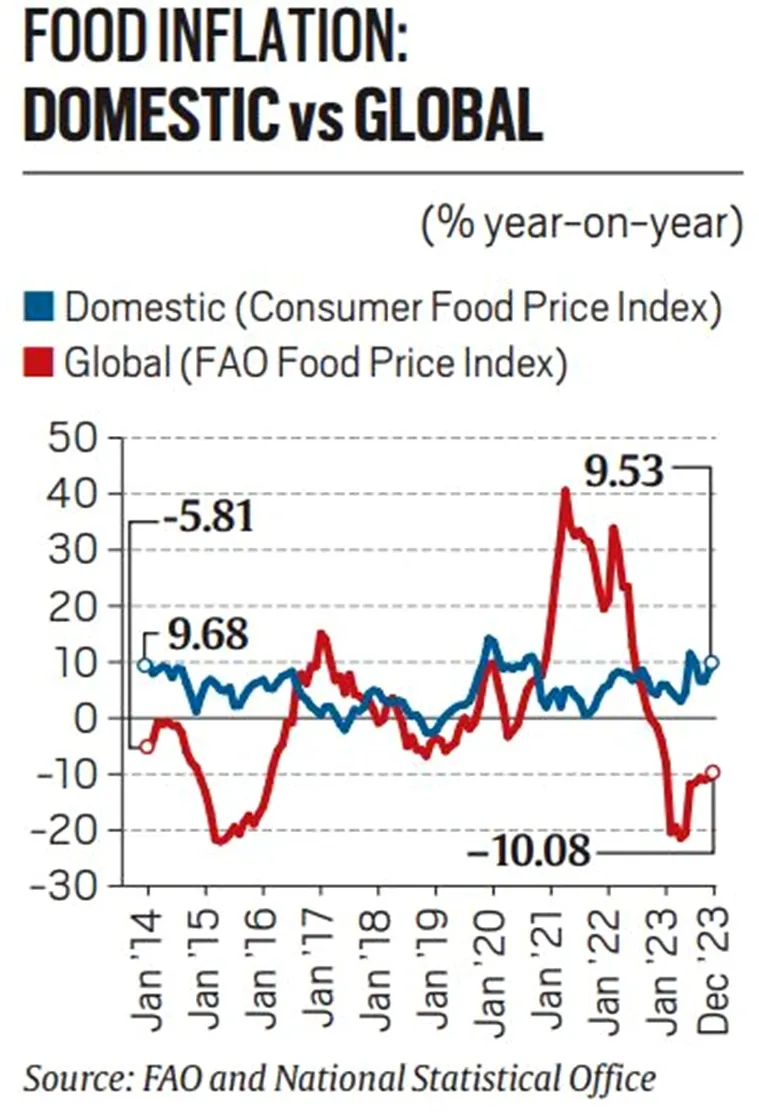
Global factors
- Slow transmission of Imports and exports led to inflation is observed.
- Global supply chain disruptions due to COVID-19, then the Russia-Ukraine conflict, resulted in import-led domestic retail inflation in edible oil and pulses.
- To counter imports of major pulses and crude edible oils at 0-5.5% duty till 2025 were allowed.
- Low global prices of Russian wheat and Indonesian crude palm oil trade off the threat of imported inflation.
- In other basket items, such as cereals, sugar, dairy, and poultry, to fruits and vegetables, India isn’t just self-sufficient but also an exporter.
- With the banned export of wheat, non-basmati white rice, sugar and onion, the potential for export-led inflation is effectively shut.
No impact of Red Sea attacks on food items
- Imports of arhar (pigeon pea) and urad (black gram) are mainly from Mozambique, Tanzania, Malawi and Myanmar and do not involve the Red Sea route.
- Masoor (red lentils) from Australia and Canada come through the North Pacific-Indian Ocean route.
- Marginally, the impact on Russian and European yellow/white peas can be there, but Canada is the biggest supplier for India.
- Edible oils are imported (from Indonesia, Malaysia), and Soybean (from Argentina and Brazil) through the South Atlantic and Indian Ocean, facing no impact of Red Sea attacks.
Domestic challenges
- Area sown under wheat has increased with conducive weather, indicating a bumper harvest.
- But sugar stocks in mills are at a six-year low, posing a challenge.
- Area sown under pulses has also decreased this year.
{Prelims – S&T – Space} Mars Helicopter Ingenuity
- Context (IE): NASA has reestablished contact with the Mars Helicopter Ingenuity.
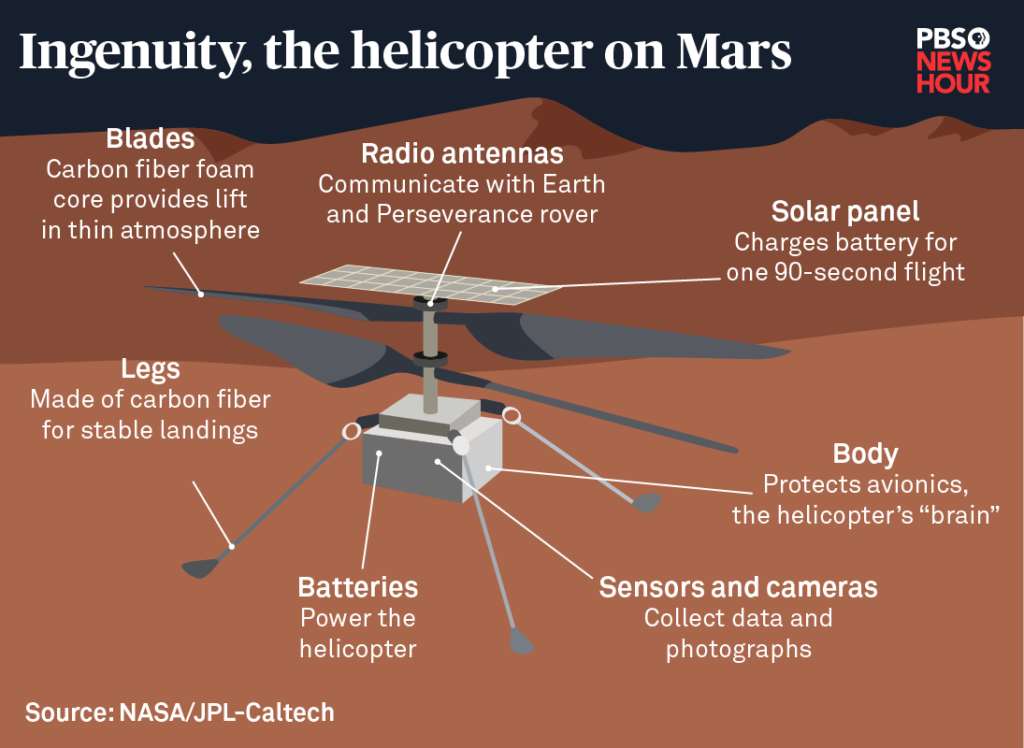
- NASA sent a spacecraft to Mars in July, 2020, with the Perseverance rover and Ingenuity (helicopter) attached.
- The rover’s job is to study ancient life signs and collect samples for future missions.
- Ingenuity, on the other hand, is an experiment to test flight on another planet for the first time.
- Ingenuity is an autonomous aircraft. It is piloted by onboard guidance, navigation, and control systems running algorithms.
Significance
- Ingenuity is the first aircraft in history to make a powered, controlled flight on another planet.
- It managed to fly in Mars’ thin atmosphere, which isn’t conducive for flying.
|





![PMF IAS Environment for UPSC 2022-23 [paperback] PMF IAS [Nov 30, 2021]…](https://pmfias.b-cdn.net/wp-content/uploads/2024/04/pmfiasenvironmentforupsc2022-23paperbackpmfiasnov302021.jpg)


